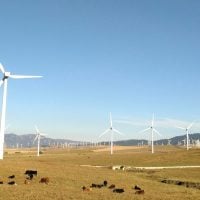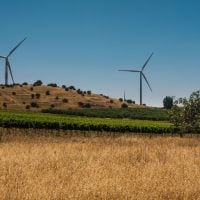Deadline: 5-Aug-24
The Natural Resources Conservation Service (NRCS) is announcing the availability of Conservation Innovation Grants (CIG) State Program funding to stimulate the development and adoption of innovative conservation approaches and technologies.
The purpose of CIG is to stimulate the development and adoption of innovative conservation approaches and technologies in conjunction with agricultural production in the United States and its territories. CIG projects are expected to lead to the transfer of conservation technologies, management systems, and innovative approaches (such as market-based systems) to agricultural producers, into government technical manuals and guides, or to the private sector. CIG generally funds pilot projects, field demonstrations, and on-farm conservation research. On-farm conservation research is defined as an investigation conducted to answer a specific applied conservation question using a statistically valid design while employing farm-scale equipment on farms, ranches or private forest lands.
Objectives
- The goals and objectives of this program align with the USDA Strategic Plan listed below.
- Use climate-smart management and sound science to enhance the health and productivity of agricultural lands.
- Lead efforts to adapt to the consequences of climate change in agriculture and forestry. Increase carbon sequestration, reduce greenhouse gas emissions, and economic opportunities (and develop low-carbon energy solutions).
- Build resilient food systems, infrastructure, and supply chain.
- Foster agricultural innovation.
Priorities
- Nutrient and Sediment Reduction in Impaired Watersheds: To demonstrate innovations that support conservation of natural resources within impaired watersheds, particularly the development and implementation of innovative new tools, approaches, practices, and technologies.
- Demonstrate effectiveness of “high potential” conservation practices (such as drainage management, wetlands designed for nutrient reduction, conservation buffers, cropping systems including cover crops, in-field nutrient management) in reducing nutrient leaching and runoff and document benefits in small watersheds.
- Ecology health and water quality of watersheds.
- Irrigation: To demonstrate innovations that support conservation of natural resources of surface water, particularly the development and implementation of innovative new tools, approaches, practices, and technologies.
- Demonstrate innovative irrigation water management techniques documenting water quality improvements associated with irrigation systems in Arkansas.
- Demonstrate drone use with irrigation water management uniformity and crop monitoring.
- Micro irrigation including underground Micro in High Tunnels:
- Demonstrate Irrigation Water Management by using underground micro irrigation to reduce the use of water by monitoring ground moisture while improving plant health and production by reducing fungal growth while using a natural mulch system.
- Energy savings on pumping and other farm operations related to irrigation.
- Demonstrate irrigation water use efficiency in hydroponic crop production and detail the cost (fixed and variable) of multiple alternative crops in this production system, especially as this relates to small urban scale farming. Fact sheets and trainings will be a key component of proposals.
- Demonstrate irrigation water use efficiency in hydroponic crop production and detail the cost (installation and inputs) vs production of multiple alternative crops relative to irrigation.
- Soil Health: To demonstrate innovations that support conservation of natural resources in urban agriculture contexts, particularly the development and implementation of innovative new tools, approaches, practices, and technologies.
- Demonstrate and quantify the impacts of cover crops, crop rotations, tillage and/or soil amendments on soil chemical, physical, and/or biological properties and their relationships with nutrient cycling, soil water availability, and plant growth in areas that have been land leveled in Arkansas.
- The transfer and demonstration of row rice technology can improve soil health, reduce irrigation, and allow rice production to use no-till methods. Demonstration of the use of soil health practices (i.e. cover crop, nutrient management, irrigation water management) in a row rice cropping system, including cost-benefit information and yields.
- Promote practices that further develop soil carbon amendments to increase organic matter and improve aggregate stability that will increase irrigation water efficiency and support microbial communities.
- Soil Preparation addressing soil health in high tunnels.
- Demonstrate the use of compost materials by improving soil biologic, carbon organic matter and improve nutrient cycling. Use nutrient testing on compost and soil health tests to manage soil fertility.
- Demonstrate the use of cover crops to improve soil armor (residue) and proper soil temperature and improving plant health.
- Demonstrate and provide illustration on how to utilize cover crops, natural mulch, and applying soil health practices to improve soil structure, lowering soil temperatures by allowing for greater water-holding capacity and improved plant health and yield potential.
- Demonstrate and build a factsheet on seasonal planting dates for high tunnels that provides illustrations of the planting dates and plants that are grown achieve greater returns with less waste. Planting dates should also correspond along with a pollinators habit to increase much needed beneficial insects for plant health and production.
- Pasture: To demonstrate innovations that support conservation of natural resources with pastures, particularly the development and implementation of innovative new tools, approaches, practices, and technologies.
- Forage gaps in a seasonal forage system.
- Reassessing rates of nutrients, sources, and effectiveness
- The economic benefits of grazing management
- Climate Smart: Seeking projects that investigate current practices and new, innovative practices may support land users’ adaptation to climate change and mitigation of greenhouse gas emissions.
- Applications that quantify how management practices address climate change are needed, such as how irrigation projects such as converting groundwater use to surface water (pumping horse power requirements), diesel to electric conversion, landleveling, tailwater recovery, and practices that increase irrigation efficiency can reduce greenhouse gas emissions.
- Other novel climate smart practices that reduce GHG emissions compared to customary farming practices are encouraged.
- Urban Agriculture: To demonstrate innovations that support conservation of natural resources in urban agriculture contexts, particularly the development and implementation of innovative new tools, approaches, practices, and technologies.
- Demonstration of resource concerns and conservation practices associated with controlled environment ag methods such as hydroponics, aeroponics, aquaponics, and vertical farming.
- Evaluation of conservation adoption and approaches for urban and small farms.
- Demonstration of the environmental effectiveness, utility, affordability, and usability of conservation practices in a small farm or urban setting.
- Demonstration of new conservation practices that help small and urban producers adapt to the impacts of climate change, through increased resiliency on the farm, increased carbon sequestration, or other methods.
- Energy:
- Demonstrate and test energy efficiency upgrades to poultry operations that can be transferred to other producers such as ventilation, insulation, and lighting.
- Quantify the reduction in CO2 emissions from innovative operation upgrades or carbon capturing.
- Determine if off-grid irrigation pumps efficiency supply irrigation to a variety of crops.
Funding Information
- Estimated Funding
- NRCS Arkansas expects to award approximately $300,000 through this opportunity. However, the agency retains the discretion to award a larger or lesser amount.
- Start Dates and Performance Periods
- Projects may be between one and three years in duration. Applicants should plan their projects based on an estimated project start date of 09-30-2024.
- Number of Awards
- The agency expects to make 3 award(s).
- The estimated funding floor for this opportunity is $25,000, and the estimated funding ceiling is $100,000.
Eligibility Criteria
- All U.S. non-Foreign, non-Federal entities and individuals are eligible to apply for projects carried out in Arkansas. US Federal agencies are not eligible to apply to this opportunity or impart their work to non-federal portion of the budget.
- Individuals that are business owner/operators cannot apply as individuals.
- CIG Specific Eligibility
- Be in compliance with the highly erodible land and wetland conservation provisions.
- Be a person, legal entity, joint operation, Indian tribe, or native corporation who is engaged in agricultural production or forestry management or has an interest in the agricultural or forestry operation.
- Have control of the land involved for the term of the proposed contract period.
For more information, visit Grants.gov.









































